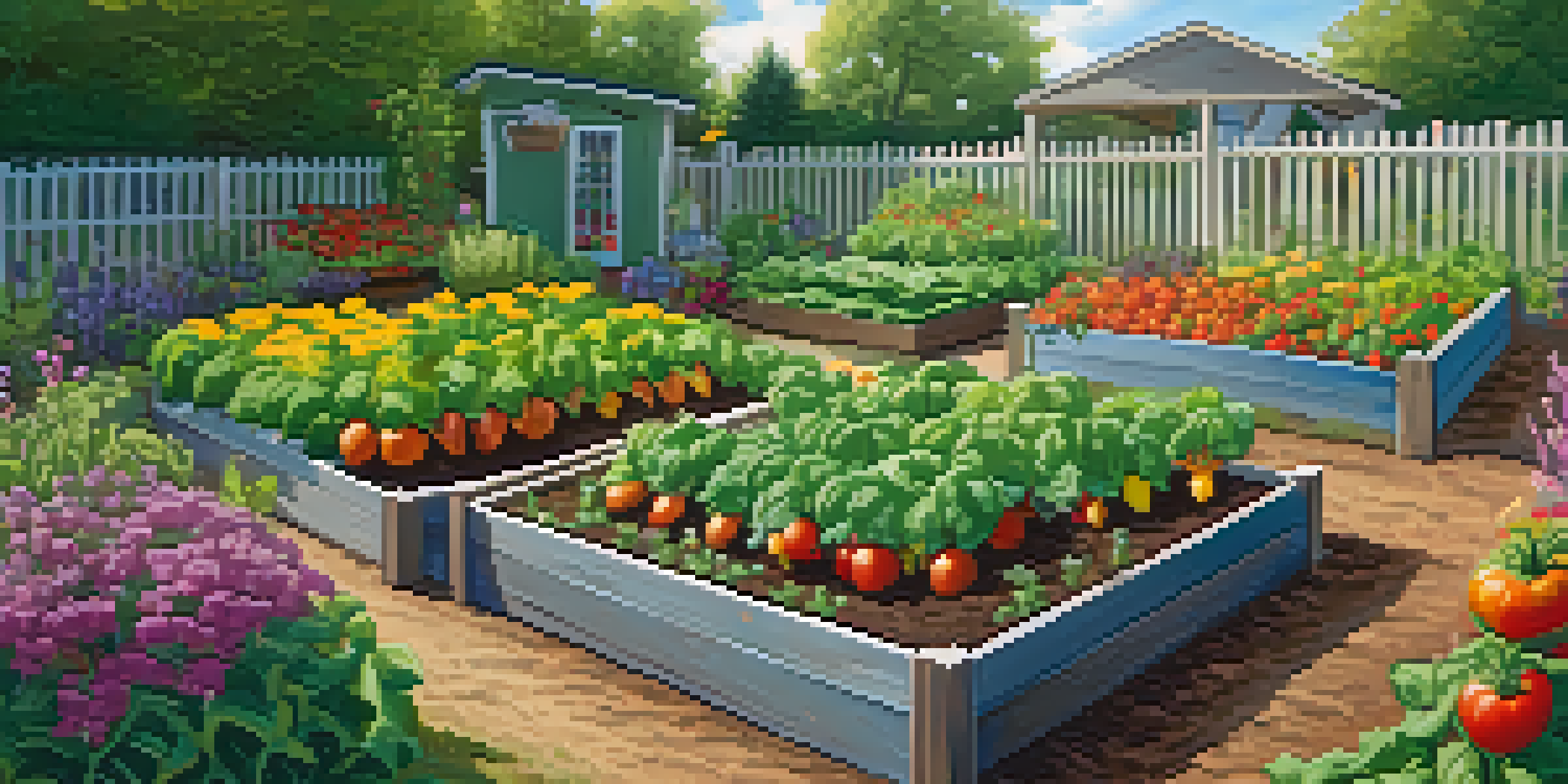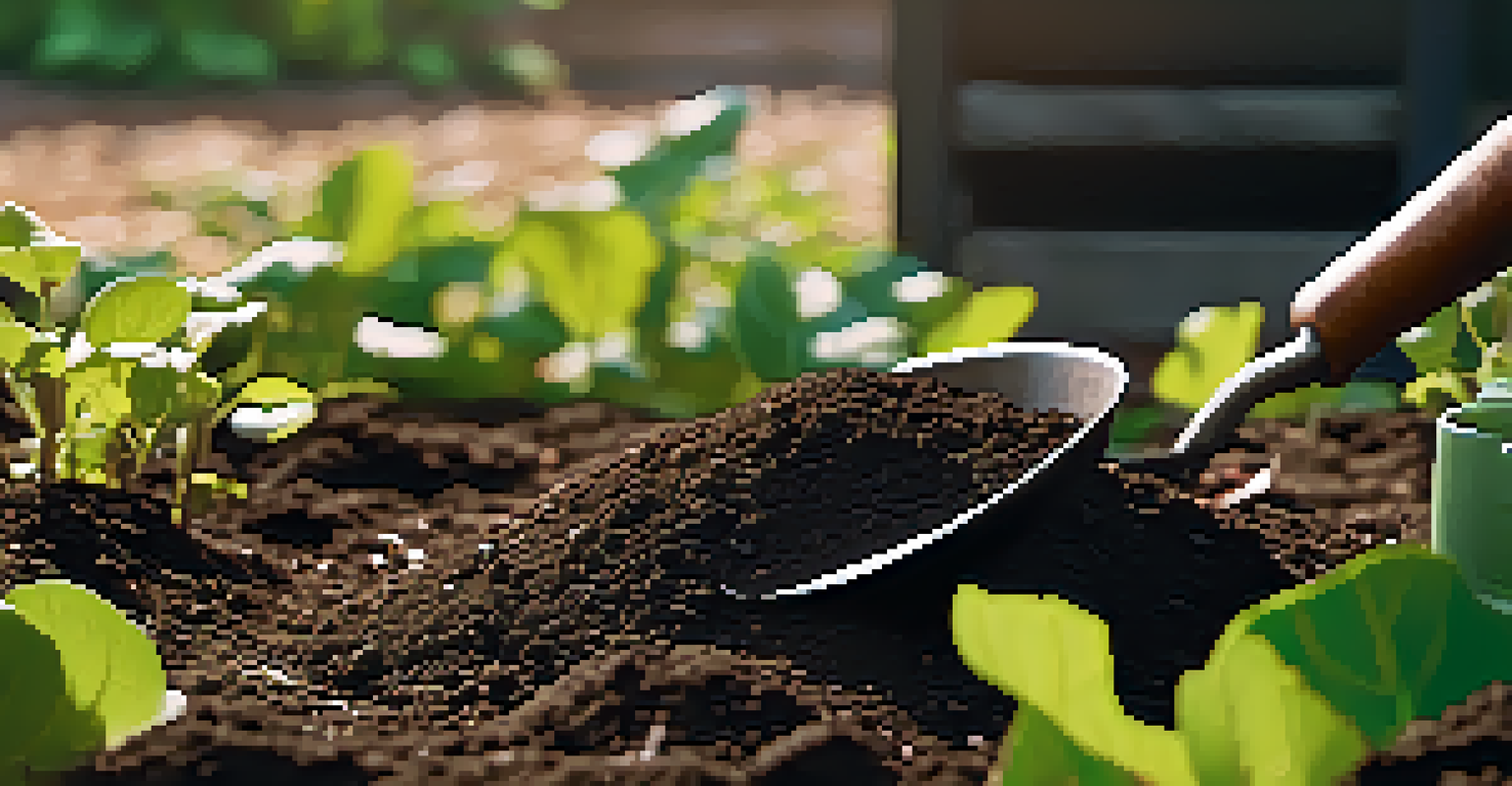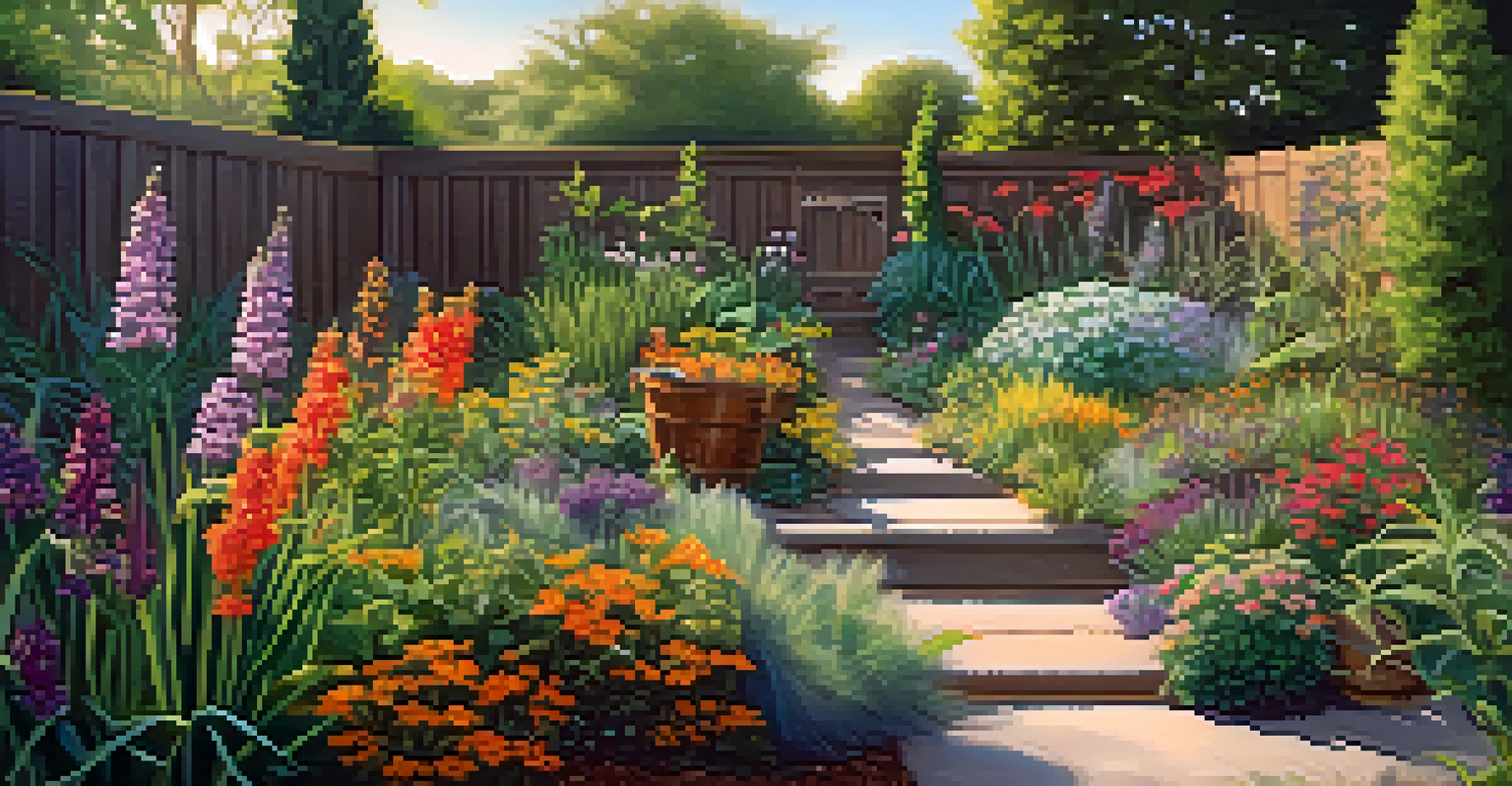How to Create a Sustainable Vegetable Garden at Home

Understanding Sustainability in Gardening
Sustainability in gardening means growing plants in a way that preserves resources and promotes ecological balance. It's about creating a garden that not only produces food but also nurtures the environment. By focusing on methods that conserve water, improve soil health, and protect biodiversity, you can make a positive impact on your local ecosystem.
The best time to plant a tree was twenty years ago. The second best time is now.
Imagine your garden as a small planet where every element interacts harmoniously. Just like in nature, sustainable gardening relies on cycles and relationships among plants, soil, and animals. This interconnectedness is key; when you plant a diverse range of vegetables and flowers, you help attract beneficial insects and improve pollination.
Ultimately, sustainable gardening is about making choices that benefit both you and the environment. By adopting eco-friendly practices, you’ll be contributing to a healthier planet while enjoying fresh, home-grown produce.
Choosing the Right Location for Your Garden
Selecting the perfect spot for your vegetable garden is crucial for its success. Look for a location that receives at least six to eight hours of sunlight each day, as most vegetables thrive in bright conditions. Additionally, consider accessibility for watering and harvesting, as well as proximity to your kitchen for convenience.

Take note of the soil quality in your chosen area. Healthy soil is rich in organic matter and well-draining. If the soil is poor, you can improve it by adding compost or organic fertilizers, which will provide the nutrients your plants need to flourish.
Sustainable Gardening Practices
Implementing eco-friendly methods preserves resources and promotes ecological balance in your garden.
Lastly, consider wind exposure and drainage. A sheltered location can protect your plants from harsh winds, while good drainage prevents water from pooling around the roots. Finding the balance in these factors will set your garden up for long-term success.
Preparing Your Soil for Planting
Soil preparation is a vital step in creating a sustainable vegetable garden. Start by testing your soil to understand its pH and nutrient levels; this will guide your amendments. You can usually find inexpensive soil testing kits at garden centers or through local agricultural extensions.
Sustainability is about ecology, economy, and equity.
Once you have your soil test results, you can improve your soil by adding organic matter, such as compost or well-rotted manure. This not only enriches the soil but also enhances its structure, making it easier for roots to grow and for water to penetrate.
Remember, healthy soil is the foundation for a thriving garden. By investing time in preparing your soil, you're setting up a productive environment where your vegetables can grow robustly and sustainably.
Selecting Sustainable Vegetable Varieties
Choosing the right vegetable varieties is key to a sustainable garden. Opt for heirloom or native plants that are well-adapted to your local climate. These varieties are often more resilient to pests and diseases, reducing the need for chemical interventions.
Consider growing a mix of fast-growing and long-term crops to maximize your harvest throughout the seasons. For example, plant radishes and lettuce alongside tomatoes and peppers. This diversity not only makes your garden more visually appealing but also supports a balanced ecosystem.
Choose the Right Garden Location
Finding a sunny, accessible spot with good soil and drainage is crucial for your garden's success.
Don't forget to think about companion planting, where certain plants benefit each other when grown together. For instance, planting marigolds near tomatoes can help deter pests. This natural approach enhances sustainability while boosting your crop yield.
Implementing Water-Saving Techniques
Water conservation is a cornerstone of sustainable gardening. One effective method is to install a rainwater collection system, which allows you to use natural rainfall to water your plants. This not only conserves water but also reduces your utility bills.
Another technique is to use mulch around your plants. Mulching helps retain soil moisture, suppresses weeds, and gradually adds nutrients to the soil as it breaks down. Organic materials like straw, wood chips, or dried leaves work wonderfully and can be sourced sustainably.
Lastly, consider drip irrigation systems that deliver water directly to the plant roots. This targeted approach minimizes water waste and ensures your plants receive the moisture they need without excess evaporation.
Encouraging Biodiversity in Your Garden
Biodiversity is essential for a thriving ecosystem, and your garden can be a sanctuary for various species. Start by planting a mix of vegetables, herbs, and flowers to attract beneficial insects and pollinators. This creates a balanced environment where natural pest control can thrive.
Incorporating native plants into your garden is a fantastic way to support local wildlife. Native plants provide food and habitat for birds, butterflies, and other creatures, enhancing the overall health of your garden's ecosystem.
Encourage Garden Biodiversity
Planting a mix of species and native plants enhances ecosystem health and supports beneficial wildlife.
Consider setting up a small compost bin as well, which not only reduces waste but also attracts worms and beneficial microbes that improve soil health. By inviting diversity into your garden, you're fostering a resilient environment that can withstand pests and diseases.
Maintaining Your Sustainable Garden Practices
Once your garden is established, regular maintenance is key to keeping it sustainable. Monitor your plants for signs of pests or diseases, and employ organic methods for control, such as introducing beneficial insects or using natural sprays. This proactive approach reduces the need for chemical solutions.
Regularly adding organic matter to your soil, through compost or green manures, keeps it healthy and nutrient-rich. This practice not only supports your plants but also enhances soil biodiversity, which is crucial for a sustainable garden.

Finally, keep learning and adapting your practices. Each season brings new challenges and opportunities, so stay engaged with your garden and be open to experimenting with new techniques and plants. This continuous improvement will help ensure your garden remains sustainable for years to come.